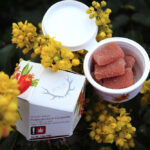The Bible has always been a bestseller and an influential book for billions around the world. However, in recent years, a particular edition known as the “Pink Bible” has surged in popularity, especially among younger readers. With its unique aesthetic and personalized features, the Pink Bible has made an impressive impact, merging tradition with modern appeal. Here, we’ll explore what the Pink Bible is, why it’s resonating with a younger demographic, and what this means for faith-based publishing in the digital age.
What is the Pink Bible?
The Pink Bible is a specially designed edition of the Bible that stands out for its distinct pink cover and often features additional elements targeted toward young readers. Unlike conventional Bibles with plain or traditional covers, the Pink Bible is designed to catch the eye and stand out on a bookshelf or social media feed.
While “Pink Bible” can refer to different versions, many include features tailored to younger audiences, such as devotionals, study guides, and inspirational quotes. Some are specifically themed around self-love, confidence, and empowerment, emphasizing how scripture can apply to modern life. The Pink Bible is often marketed as a gift Bible, one that resonates with young women and girls but also appeals to anyone interested in a modern twist on a classic.
Reasons Behind the Popularity of the Pink Bible
Several factors contribute to the growing appeal of the Pink Bible among young readers. These include aesthetics, personalization, accessibility, and a desire for connection in an increasingly digital and fragmented world.
1. Visual Appeal and Modern Design
Today’s youth are deeply immersed in a visual culture, with platforms like Instagram, Pinterest, and TikTok influencing what they read, wear, and buy. The Pink Bible’s aesthetic is tailored to this trend, using bright colors, beautiful typography, and minimalist or elegant designs.
By giving the Bible a fresh, visually appealing update, they make it more inviting for those who might not have otherwise picked it up. The Pink Bible feels like a personal item, blending seamlessly into a bookshelf filled with modern literature, self-help books, and stylish decor.
2. Personalization and Customization
Many Pink Bibles come with added features that speak to personal growth and self-reflection. For example, certain editions include journaling space, reflective questions, or devotionals that encourage readers to relate the scripture to their own lives.
Some publishers even offer options to add a name or a favorite verse to the cover or include inserts with prompts and meditations that make the Pink Bible feel like a personal journey. For young people who value self-expression and individuality, these personal touches make the Bible feel more accessible and relatable.
3. Accessible Language and Commentary
A significant factor in the Pink Bible’s appeal is the modern, accessible language it often employs. Many of these editions are translations or paraphrases written in easy-to-understand language, such as the New Living Translation (NLT) or The Message. These versions aim to convey biblical teachings without the complex language of older translations, making it easier for young readers to understand and engage with the text.
Alongside the approachable language, many Pink Bibles feature commentaries, devotionals, and practical applications written specifically for younger readers. These additions help bridge the gap between ancient scripture and modern life, showing readers how the teachings can apply to their own experiences and challenges.
4. Emphasis on Themes of Empowerment and Self-Worth
Many Pink Bibles cater to a younger demographic by emphasizing themes of self-worth, empowerment, and positive identity. This focus on personal growth resonates with readers who may be navigating issues of self-doubt, stress, and identity in a rapidly changing world.
For example, devotionals may discuss topics such as self-love, resilience, and friendship, providing relevant guidance for young readers. By connecting these modern issues to biblical teachings, the Pink Bible offers a sense of stability and encouragement. In a world where many young people are searching for affirmation, the Pink Bible provides positive, faith-based reinforcement of their inherent value.
5. Encouraging Community and Connection
One of the unique aspects of the Pink Bible is how it fosters a sense of community. The popularity of Bible journaling and social media groups has created a space where readers can share their thoughts, reflections, and artistic expressions related to their Bible study. The visually appealing nature of the Pink Bible lends itself well to this practice, making it a frequent subject of posts and stories online.
Young readers who may have felt isolated in their faith find a community through these social media platforms. The Pink Bible’s visibility online helps bridge the gap between traditional religion and a digital age where connection is often virtual. By seeing others engaged with their faith in relatable, creative ways, young readers feel encouraged to explore their spirituality in a way that feels natural to them.
6. Gift Appeal and Accessibility
The Pink Bible has become a popular gift choice for young people, often given as a meaningful present for birthdays, graduations, and other milestones. Because of its appealing design and youth-oriented features, it feels accessible and welcoming, making it an ideal gift for introducing someone to scripture.
For parents, mentors, or friends looking to share faith with younger generations, the Pink Bible serves as a bridge between generations. Its blend of tradition and modernity allows it to fit comfortably into a young reader’s lifestyle, providing spiritual guidance in a format that feels relevant.
The Impact of the Pink Bible on Young Readers
The Pink Bible’s rising popularity is more than a passing trend; it reflects a broader shift in how younger generations approach religion and spirituality. For many young readers, the Pink Bible offers a way to explore faith that feels personal, accessible, and supportive. By presenting scripture in a visually appealing and relatable format, it demystifies the Bible, showing that it can be a source of guidance and strength even in a modern context.
Additionally, the Pink Bible’s accessible language and personalized features make it easier for young readers to explore the Bible at their own pace, in a way that resonates with their experiences. This approachability encourages readers to view the Bible not as a distant, outdated text but as a living, relevant guide for everyday life.
Conclusion
The Pink Bible’s success highlights an ongoing shift toward personalization, accessibility, and modern aesthetics in religious publishing. For young readers navigating a world of rapid change, social media influence, and questions of identity, the Pink Bible offers an entry point to explore faith in a way that feels approachable and supportive.
As this trend grows, we may see more innovative approaches to faith-based literature, further bridging the gap between tradition and modernity. The Pink Bible shows that, even in the digital age, the Bible can remain a powerful source of inspiration, offering guidance and connection in a format that resonates with the next generation.







